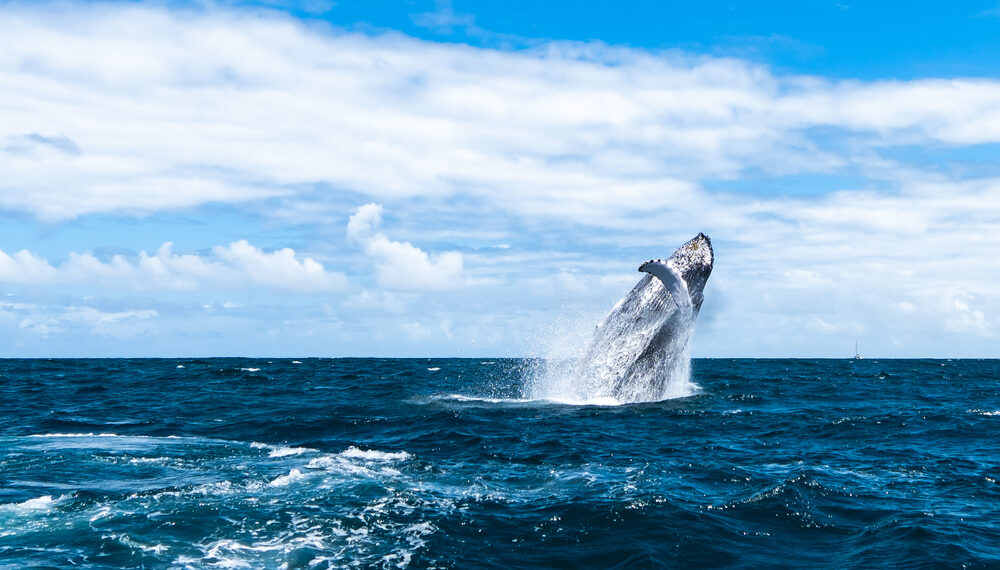Caribbean whales, like all whales, communicate with each other using a variety of vocalizations such as clicks, whistles, and songs. However, research has shown that Caribbean humpback whales have a distinct “accent” or dialect when compared to their counterparts in other regions.
This discovery was made by a team of researchers from the University of St. Andrews in Scotland, who studied the songs of humpback whales in the Caribbean Sea. They found that the songs of these whales were different from those of humpback whales in other parts of the world, such as the North Atlantic and South Pacific. Specifically, the Caribbean humpbacks sang songs with a higher frequency and more complex structure.
The researchers believe that this distinct accent or dialect may be a result of the unique environment of the Caribbean Sea. The Caribbean is home to a number of different humpback whale populations, which may have led to the development of distinct vocalizations as a way for individuals to identify and communicate with members of their own population.
Another possible explanation for the Caribbean accent is the whales’ migration patterns. Humpback whales in the Caribbean migrate from their feeding grounds in the North Atlantic to their breeding grounds in the Caribbean, and the researchers speculate that these migration patterns may have led to the development of distinct songs among the Caribbean population.
It is important to note that while the study found distinct differences in the songs of Caribbean humpback whales, it is not clear whether these differences are unique to the Caribbean or whether they are shared with other populations of humpback whales in the region. Further research is needed to fully understand the nature and origins of the Caribbean accent.
Further research on Caribbean humpback whales has provided more insight into the distinct accent or dialect of these whales. It has been found that the distinct accent is not only limited to the humpback whales, but also other species of cetaceans in the Caribbean Sea also have their own accent.
Scientists have discovered that the dialects of the Caribbean cetaceans are not only limited to the frequency and complexity of their songs, but also include differences in the type and timing of calls they make. For example, some populations of sperm whales in the Caribbean have been found to make unique clicks that are not heard in other populations.
It is now believed that the distinct accent of Caribbean cetaceans is a result of both environmental factors and social factors. The unique environment of the Caribbean Sea, with its complex coastal and oceanic habitats, may have played a role in the development of distinct dialects. Additionally, the social structure and communication patterns of cetaceans in the Caribbean may also have contributed to the development of unique vocalizations.
This research has also highlighted the importance of conservation efforts in the Caribbean. It is now clear that the Caribbean cetaceans have their own unique culture, and it is vital that we protect and preserve these distinct dialects for future generations.
The study of Caribbean cetaceans dialects has also opened up new opportunities for conservation efforts. By understanding the unique vocalizations of these animals, scientists and conservationists can now more effectively monitor and protect these populations.
One example of this is the use of passive acoustic monitoring (PAM) systems. These systems use underwater microphones to record the vocalizations of cetaceans, allowing scientists to monitor the presence and distribution of these animals in the Caribbean Sea. By analyzing the recordings of these vocalizations, scientists can identify specific populations of cetaceans, including those with distinct dialects. This information can then be used to help protect and conserve these populations.
Another example is the use of acoustics to track the migration of cetaceans in the Caribbean. By recording the songs and calls of humpback whales, for example, scientists can track their migration patterns and identify important feeding and breeding grounds. This information can be used to help protect these areas and ensure that they are not disturbed by human activities.
In addition to these conservation efforts, the study of Caribbean cetaceans dialects is also providing new insights into the social dynamics of these animals. For example, scientists have discovered that the songs of humpback whales change over time, and that these changes are related to the social dynamics of the population. This suggests that the songs of these whales are not only used for communication, but also for social bonding and possibly for cultural transmission among the population.




